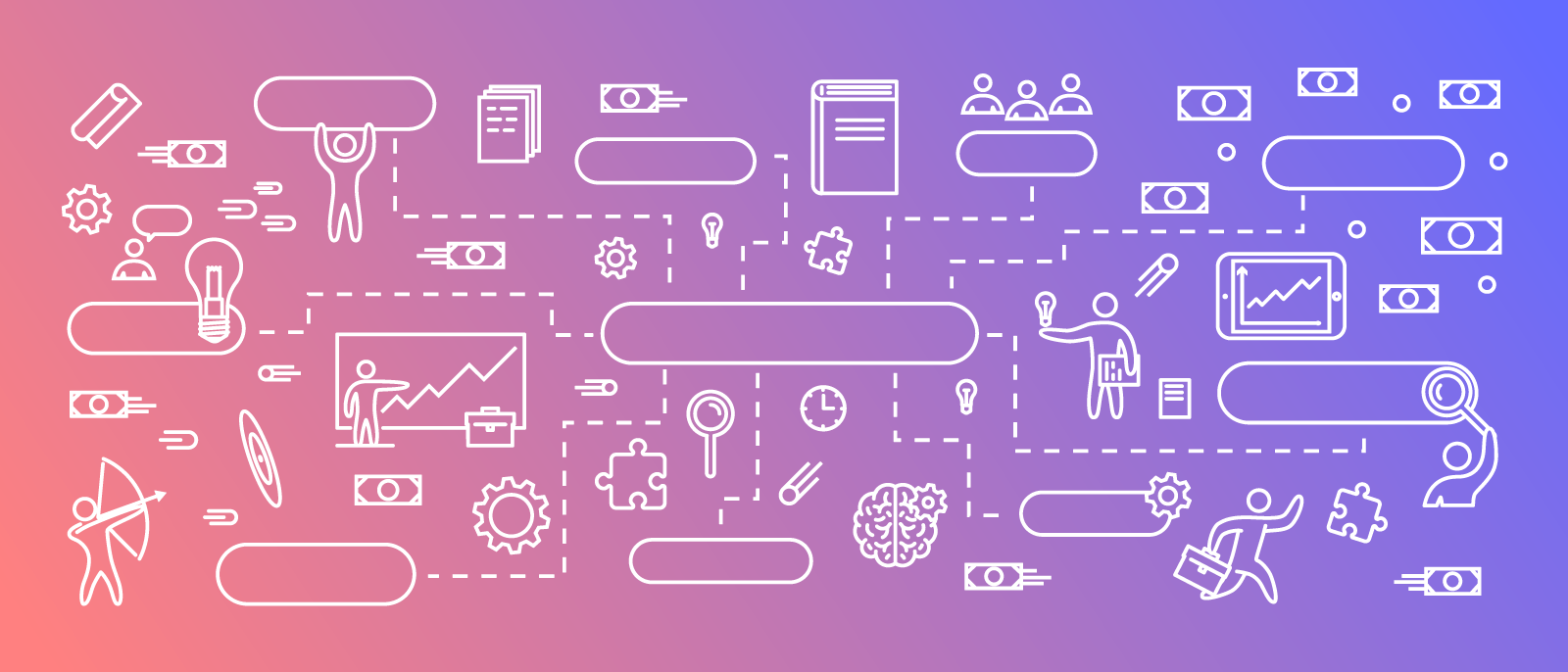
Agile-Waterfall Hybrid: Is It Right for Your Team?
Lucid Content
Reading time: about 6 min
Topics:
The Agile development method has been the methodology of choice for today’s product development teams. In fact, Agile is so popular that it has nearly rendered the Waterfall model obsolete. But don’t be so quick to dismiss the Waterfall methodology.
Both of these techniques offer valuable insights—it may be that a hybrid of both methodologies are the best fit for your organization, especially if your teams have found it difficult to fully transition to Agile.
Learn more about the Agile-Waterfall hybrid model and discover if it’s the perfect solution for your team. You’ll also find ideas for incorporating various combinations of the hybrid depending on your organization’s needs.
Difference between Agile and Waterfall
To start with, you’ll need to understand what the Agile and Waterfall methodologies are, how they diverge, and when each of these methodologies is best used.
Waterfall methodology
The Waterfall technique is a project management methodology based on a sequential design process. The name resembles the actual process: Water flows from one pool to the other in sequential order, just like a project flows from one completed task to the next. (Think of the solitaire ending animation for a better example with added zen.)
The project typically flows from requirements to design to implementation to verification to deployment to maintenance.
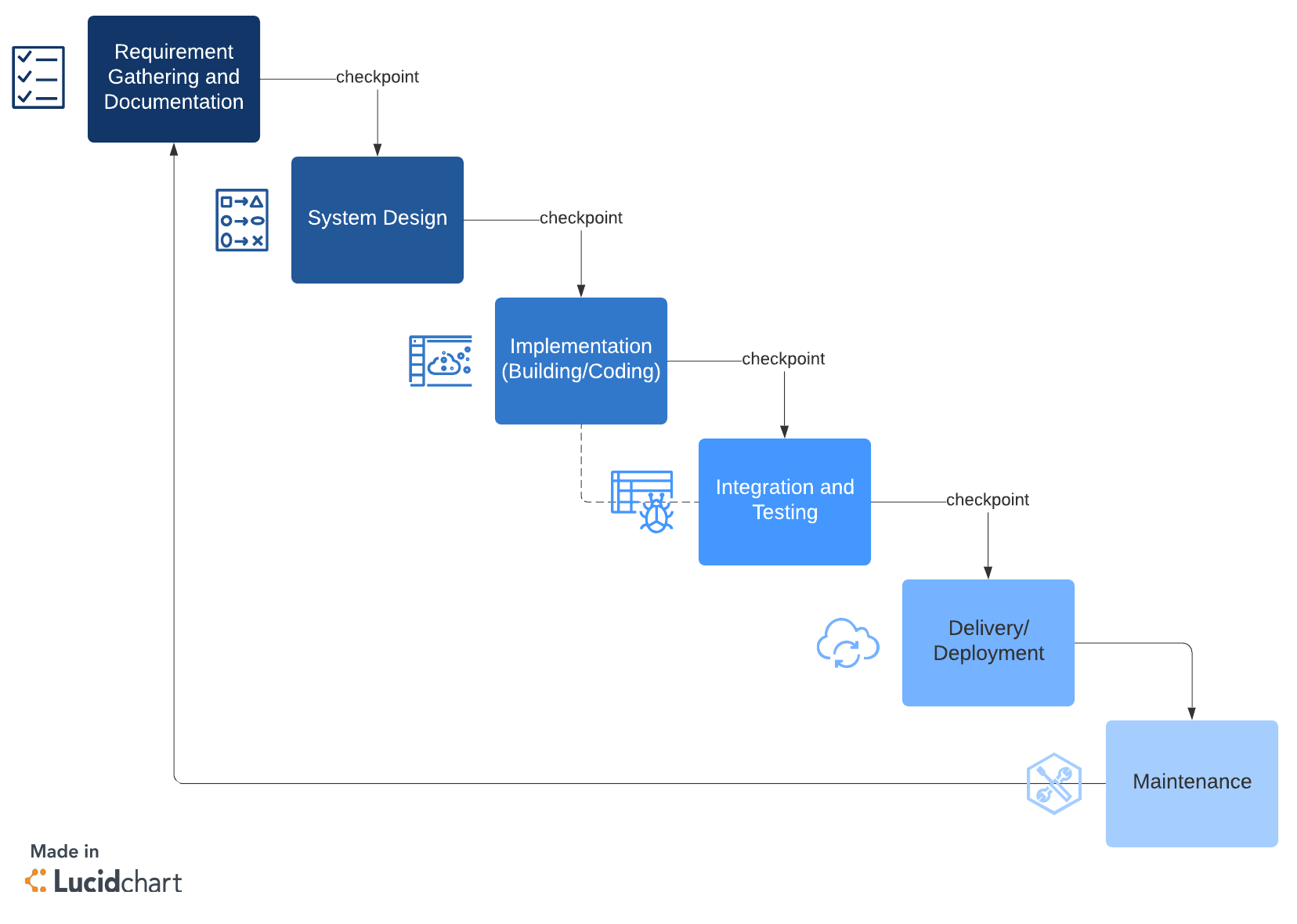
Waterfall methodology is best for:
- Small projects
- Known requirements that are unlikely to change
- Specific deployment dates
- Projects with a lot of dependent tasks
The Waterfall methodology has its advantages: It’s easy to understand and manage, and there are typically fewer production issues and better budget management. So why choose any other project management methodology?
The Waterfall technique really isn’t great for the kind of complexity required in developing most modern products. It’s not a good fit for complex or long-term projects, and it’s inflexible. That’s why Agile was developed.

Learn what the waterfall project management methodology can (and can’t) do for you.
Read nowAgile methodology
Agile is an approach that prioritizes development through evolution. Cross-functional teams collaborate to continually improve and iterate. This methodology really stems from the Agile Manifesto, a set of values and principles that prioritize flexibility, customer needs, quality software, and collaboration. As the name implies, it allows for teams to adjust the project mid-course to address customer needs or to solve issues that arise during iterations.
Agile gives people a common foundation to refer to when developing software, but it’s nowhere near as strict as the Waterfall methodology.
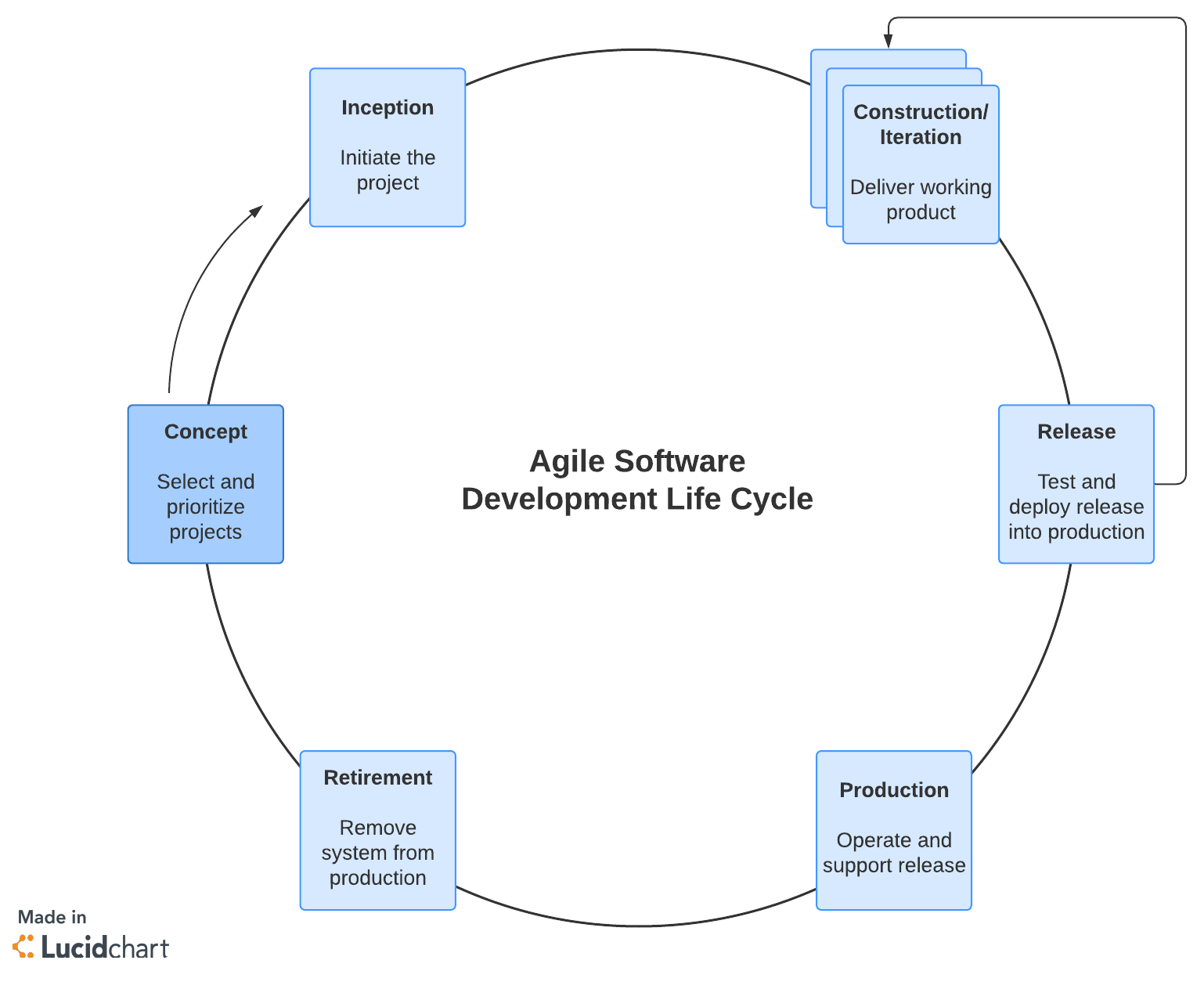
Agile works best for:
- Projects without known deadlines or the full scope of requirements
- Teams with direct access to customers
- Software that can evolve through iterations
- Teams without bureaucracy
- Projects without a fixed budget
- Projects without competition
- Customers that are happy to regularly update their software
The Agile methodology is great for fast deployments, smaller budgets, faster feedback, and experimentation. It’s really the methodology that best demonstrates the “fail fast” mindset.
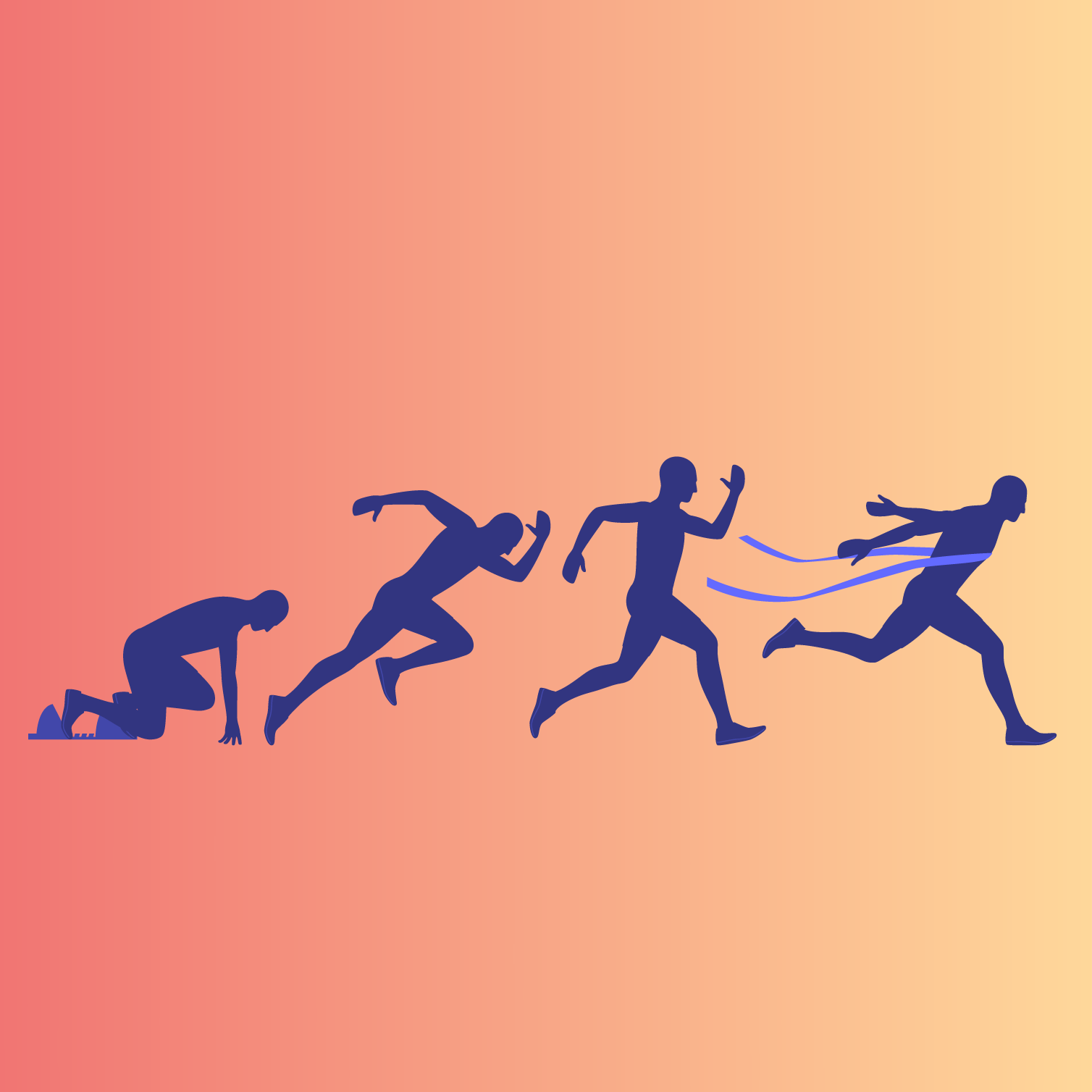
Learn about different agile methods, and start applying agile principles to your team today.
Read moreIt works best in small-to-medium teams that can think quickly, be flexible, and work independently from major corporate oversight. This is probably why it’s the methodology of choice for most start-ups and app developers.
But it isn’t for everyone.
What if you’ve read the two descriptions above and your project requirements don’t seem to align with either methodology? There’s a third option.
Agile-Waterfall hybrid method
The Agile-Waterfall hybrid incorporates the best of both methods. For purists, it’s a problematic methodology, but the Agile-Waterfall method can be applied for developing software or for developing a product that has both hardware and software.
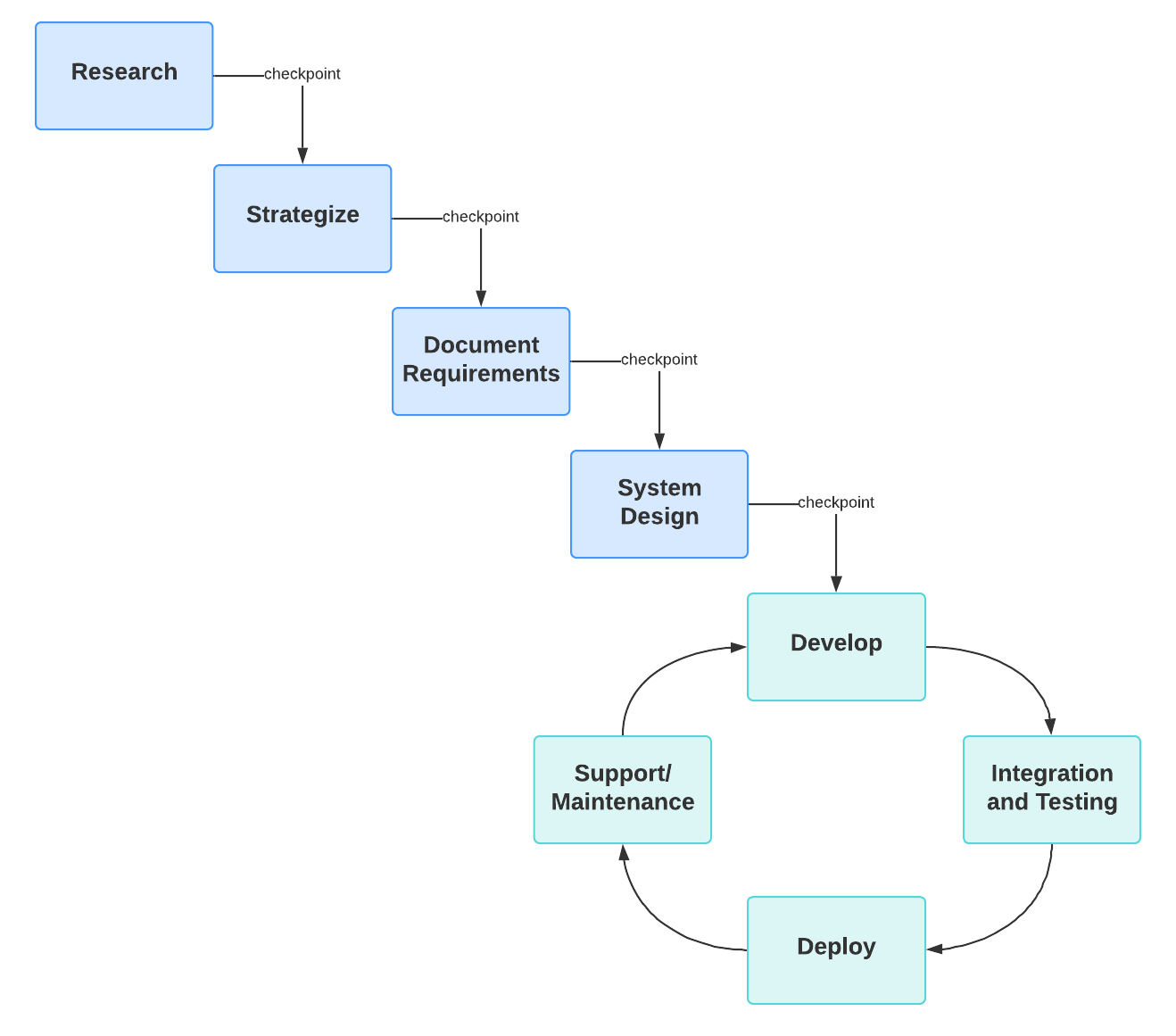
As defined by Erick Bergmann and Andy Hamilton, the Agile-Waterfall hybrid typically allows teams developing software to work within the Agile methodology, while hardware development teams and product managers stick to the Waterfall approach. You might consider using the Agile-Waterfall method when:
- You want to encourage a lot of collaboration between teams.
- Your organization is trying to transition to the Agile method, but the complexity involved is hindering progress. The Agile philosophy has many moving parts, and it can take time for teams to adopt it successfully. It may be worth using the known Waterfall method and slowly incorporating Agile techniques until everyone can transition to a fully Agile methodology.
- The project has a set budget and delivery date but would benefit from Agile’s fast design, analysis, and planning.
The reason the two methodologies can work harmoniously is that Agile is more a mindset and approach than a methodology, so it’s possible to use the Agile philosophy with the more rigid Waterfall methodology.
If you’re interested in incorporating a hybrid methodology, it’s useful to imagine a spectrum of project management approaches, with the more plan-driven and concrete Waterfall methodology on one end and the more adaptive Agile approach on the opposite end.
With that mindset, it makes sense that there is simply no one way to incorporate a hybrid model.
Possible Agile-Waterfall hybrid combos
It will be up to you and your organization to determine the best hybrid solution for your team, but here are a few possible scenarios:
- Use the Agile method on an enterprise level while using the Waterfall method for requirements, design, and implementation.
- Use the Agile approach at a project level, but use Waterfall at the organization level.
- Use the Waterfall methodology at both project and enterprise level, but use the Agile methodology for individual teams.
- Use the Waterfall methodology at both the team and enterprise level, but choose specific phases in development that will use Agile techniques.
The correct approach will be determining the nature of the problem needing to be solved and then determining which methodology would be the best fit. You may also choose to use hybrid on a per-basis use.
- For low-risk projects, consider using the plan-driven Waterfall methodology to keep costs low.
- For higher-risk projects, use Agile techniques to iterate on activities until all problems are revealed and resolved.
- For projects with tight turnaround, incremental Agile delivery may keep the customer happier.
- For highly complex projects, Agile techniques may cost more but have a more favorable outcome.
Further, your organization may choose to cherry-pick Agile components and apply them to a Waterfall methodology. That may look like adopting the Scrum method to manage teams and organize work into weekly sprints or it may look like approaching everything from the Lean methodology, with an emphasis on constantly eliminating waste and redundancy. Or perhaps your teams simply use the Kanban method to keep communication flowing and keep teams on task.
There are so many aspects of the Agile methodology that your team is likely to find at least one that can be incorporated for the betterment of the development process.
What’s the best way?
It’s tempting to become champion of one methodology, especially if you’re accustomed to it, but it’s important to remember that the successful completion of the project takes top priority. A successful methodology is only one that helps teams remain on task, produce a workable product, and stay within budget. That may involve taking the hybrid approach and may also include a bit of trial and error.
Use the suggestions above to determine what could be the best methodology for each part of your development cycle, and consider adjusting methodologies not just per team or per development section, but per project. If the project is short and easy, it may benefit from the Waterfall methodology, even though your teams are accustomed to an Agile approach.

Compare various project management styles to find the best fit for your team and build products faster.
Learn moreAbout Lucidchart
Lucidchart, a cloud-based intelligent diagramming application, is a core component of Lucid Software's Visual Collaboration Suite. This intuitive, cloud-based solution empowers teams to collaborate in real-time to build flowcharts, mockups, UML diagrams, customer journey maps, and more. Lucidchart propels teams forward to build the future faster. Lucid is proud to serve top businesses around the world, including customers such as Google, GE, and NBC Universal, and 99% of the Fortune 500. Lucid partners with industry leaders, including Google, Atlassian, and Microsoft. Since its founding, Lucid has received numerous awards for its products, business, and workplace culture. For more information, visit lucidchart.com.
